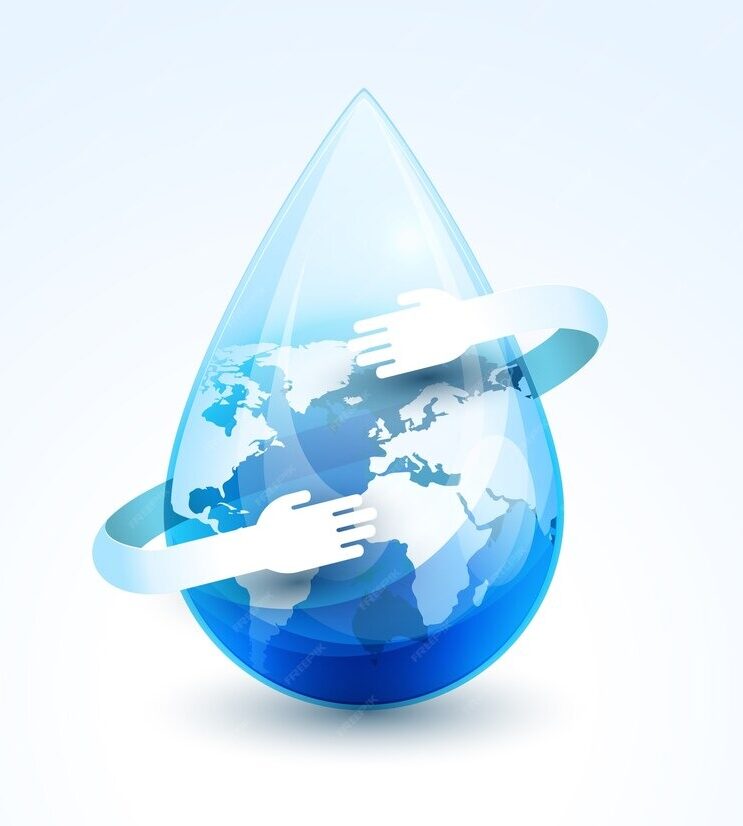In the vast expanse of South Asia, where the landscape is painted with the meandering curves of mighty rivers, lies a narrative as ancient as time itself. These rivers—symbols of life, vitality, and renewal—have been the cradle of civilisation, the source of sustenance, and the artery that connects communities across borders. Yet, amidst their tranquil beauty, lies a tale of conflict, struggle, and discord.
As we reflect on the recent World Water Day, amidst the echoes of history and the whispers of the rivers, it is imperative that we confront this narrative head-on. For far too long, the waters that flow through the veins of South Asia have been a source of contention, fuelling disputes and exacerbating tensions among neighbouring nations. But what if, instead of being a source of division, water became the key element of peace and prosperity in the region?
To understand the true potential of water for peace in South Asia, we must first delve into the rich tapestry of history that binds us together. From the fertile plains of the Indus and the Ganges to the flourishing deltas of the Brahmaputra and the Meghna, these rivers have nurtured civilisations, raised cultures, and shaped the destinies of millions. Their waters have quenched the thirst of countless generations, irrigating fields, powering industries, and sustaining livelihoods along their banks.
Yet, despite their undeniable importance, the rivers of South Asia have too often been a source of discord rather than harmony. Disputes over water sharing, dam construction, and river pollution have strained relations between neighbouring countries, casting a shadow over the region’s potential for cooperation and collaboration. But amid the darkness, there are glimmers of hope.
One such beacon of hope is the Indus Waters Treaty, signed between India and Pakistan in 1960 with the mediation of the World Bank. This landmark agreement, despite its flaws and limitations, stands as a testament to the power of diplomacy and dialogue in resolving water-related disputes. By outlining the rights and responsibilities of each party regarding the use of the Indus River basin’s waters, the treaty has helped to prevent conflicts and foster cooperation between the two countries.
But the journey towards water peace in South Asia extends beyond treaties and agreements—it is a journey of empathy, understanding, and solidarity. It is about recognising that the rivers that flow through our lands do not belong to any single nation, but to all who depend on their life-giving waters. It is about acknowledging the interconnectedness of our shared water resources and the shared responsibility we have towards their stewardship.
Imagine a future where the waters of the Ganges become a symbol of unity rather than division, where riparian nations come together not in rivalry, but in partnership. Imagine a landscape where shared efforts to combat water pollution and mitigate the impacts of climate change lead to improved water quality and increased resilience for all. Imagine a world where the rivers of South Asia become pathways to peace, prosperity, and sustainable development for generations to come.
This vision may seem ambitious, but it is within our grasp. It requires us to transcend political differences and national boundaries in pursuit of a common goal: ensuring access to clean, safe, and sustainable water for all. It demands that we listen to the voices of the marginalised and the vulnerable, whose lives are most profoundly affected by water-related challenges. And it implores us to act with courage, compassion, and conviction in the face of adversity.
As we reflect back on the World Water Day this year, let us recommit ourselves to the ideals of cooperation, compassion, and coexistence. Let us embrace the rivers of South Asia not as sources of conflict, but as pathways to peace and prosperity. And let us remember that in the currents of these mighty rivers, we find not only the promise of sustenance, but also the seeds of hope for a better tomorrow.
